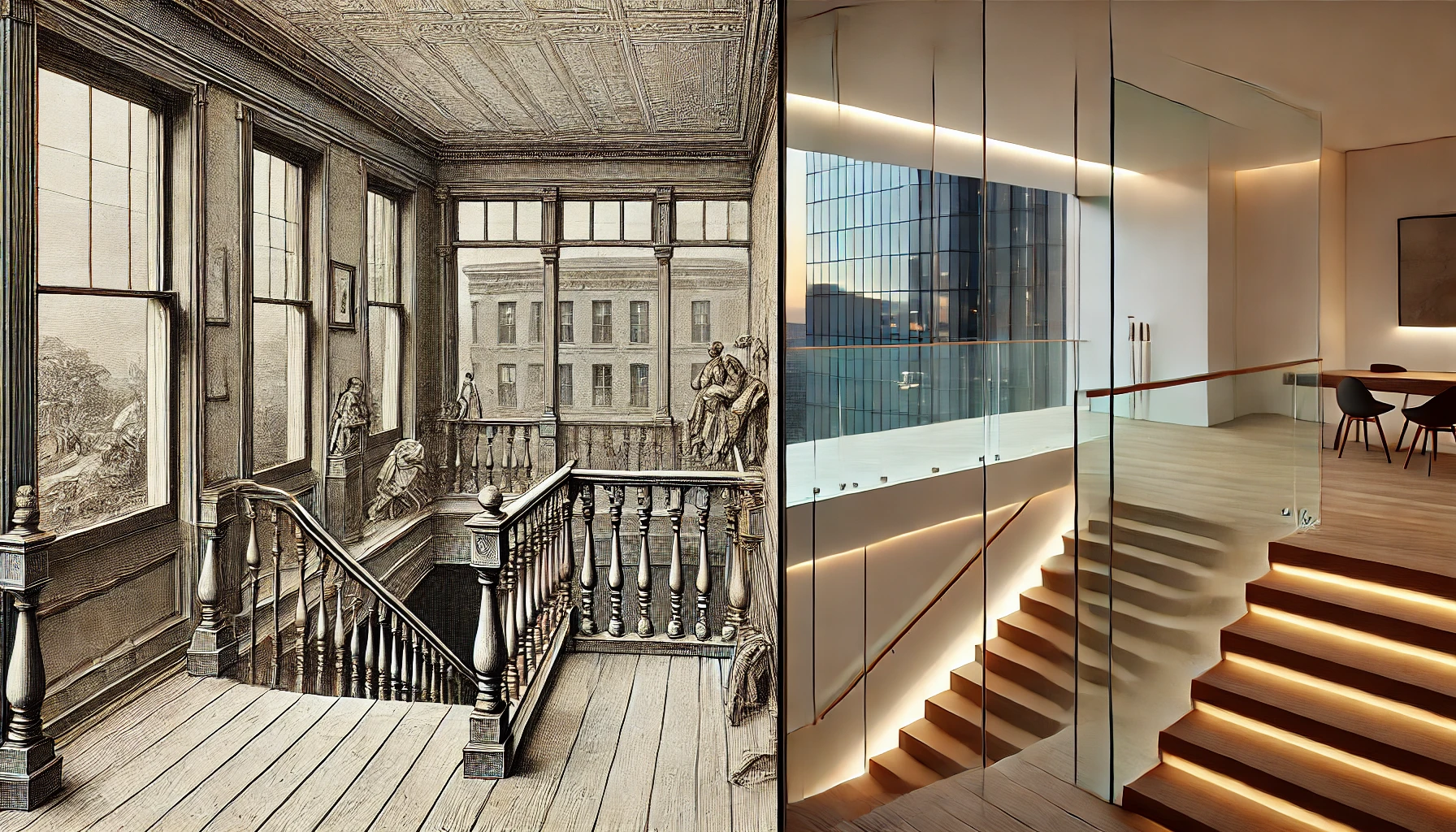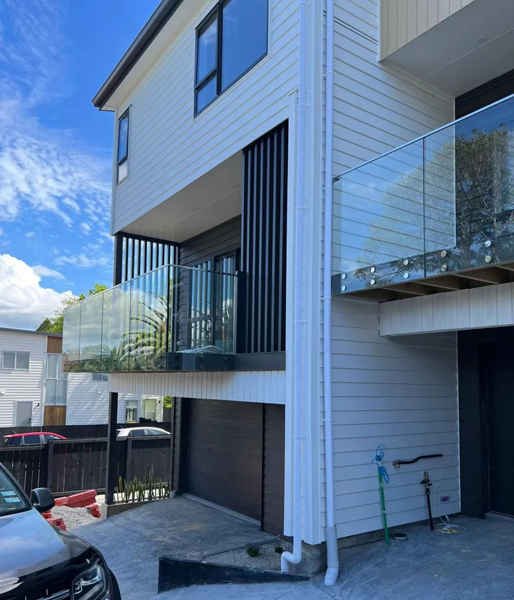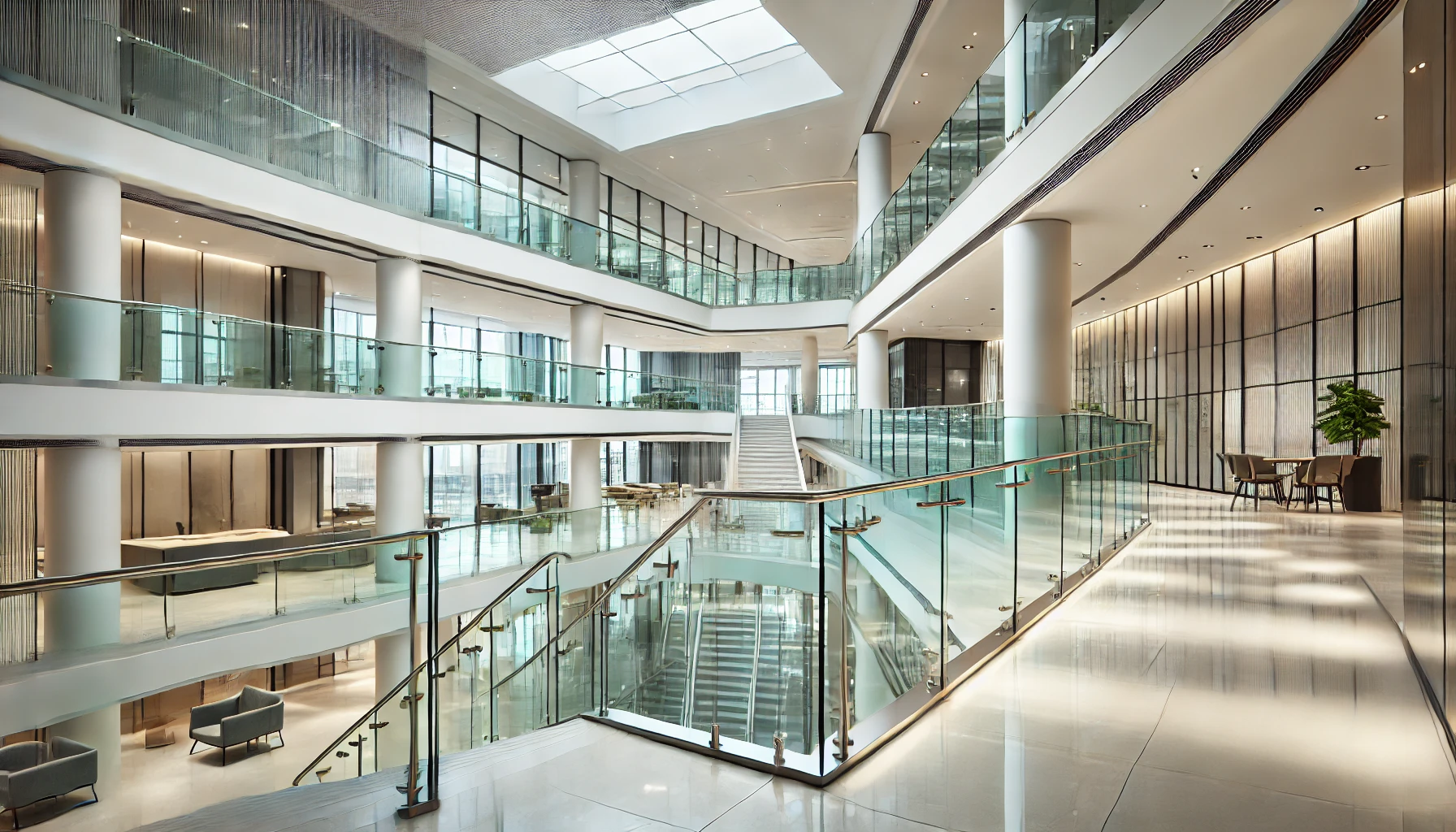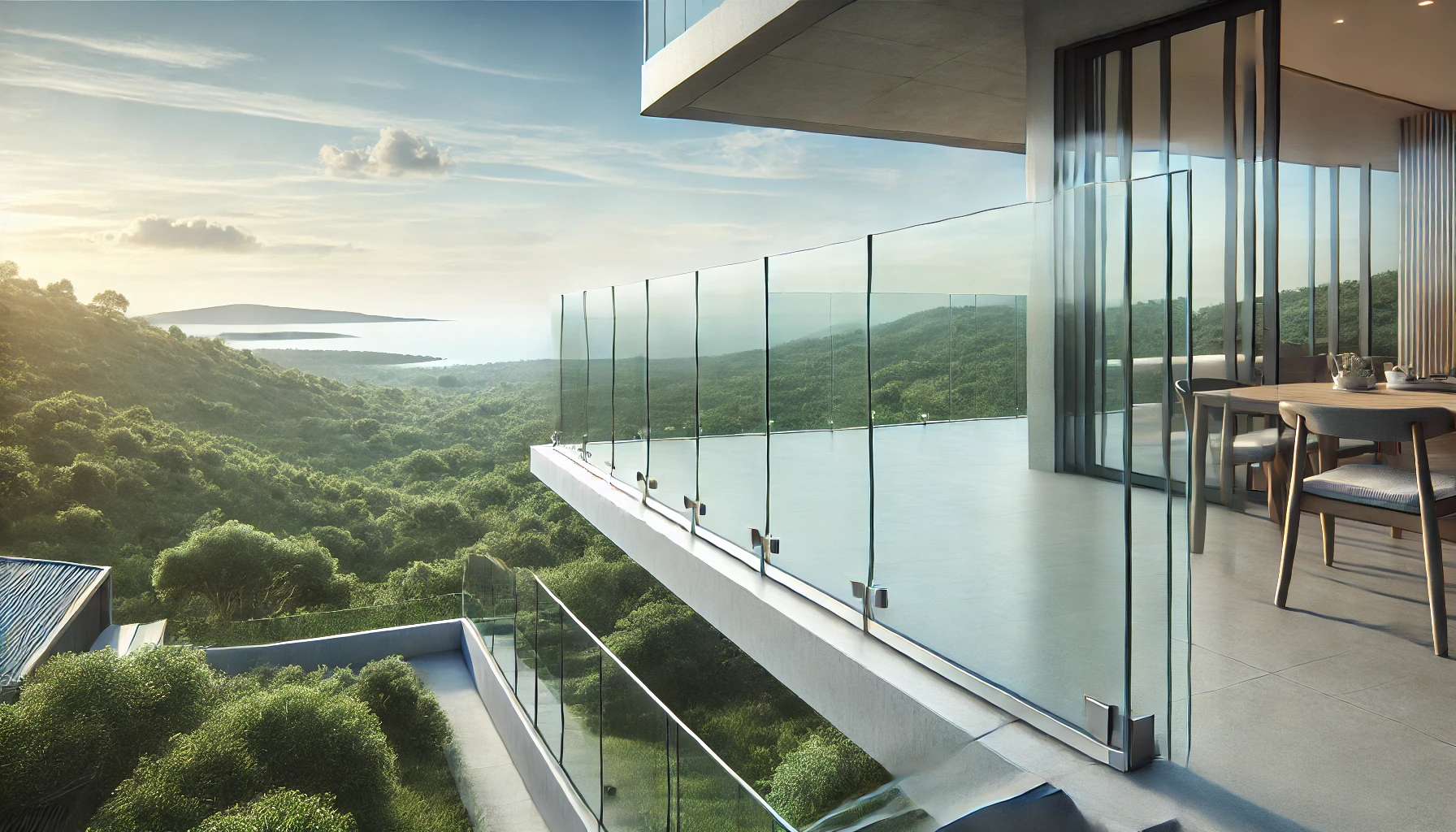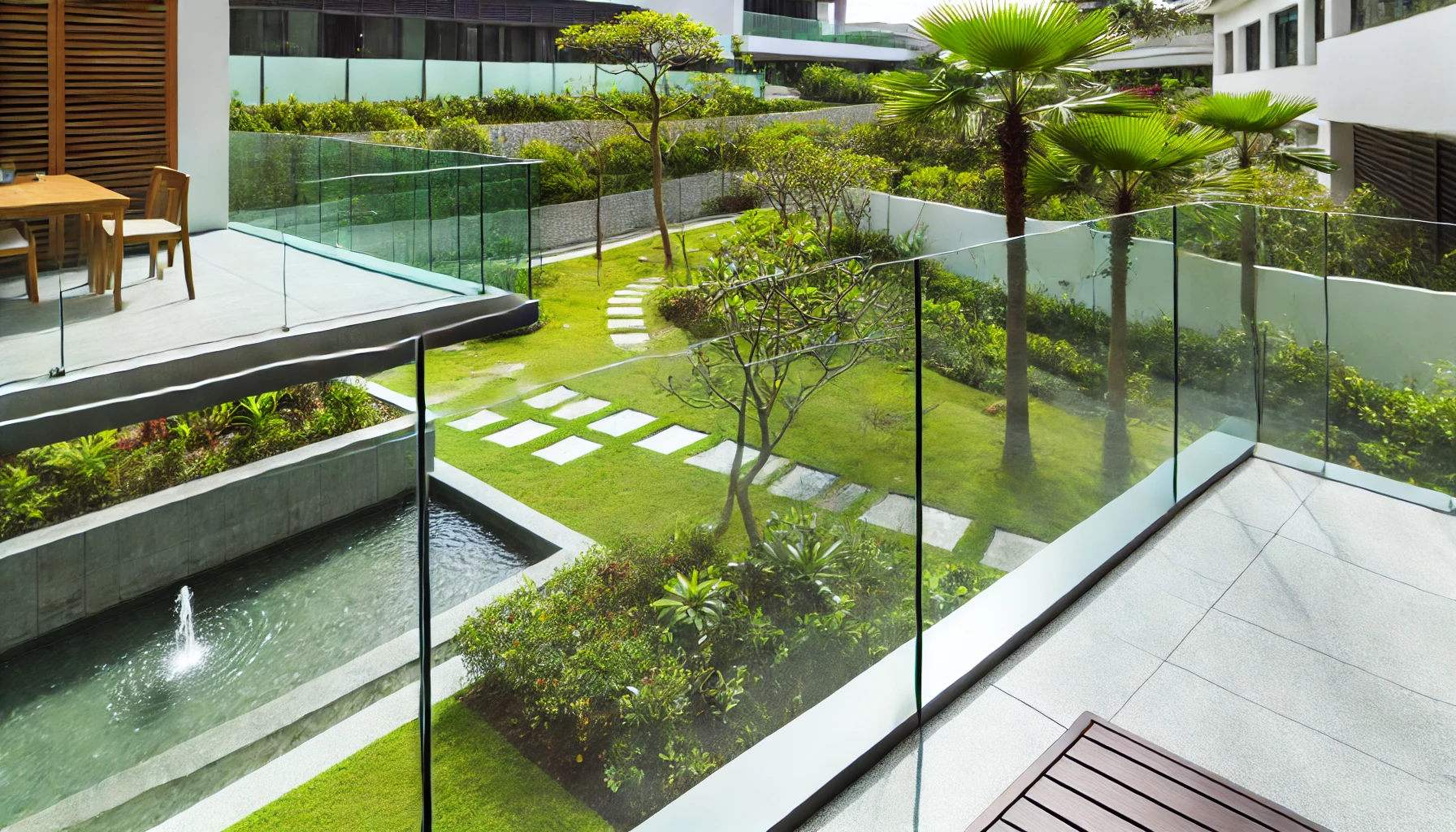Introduction
Glass railings have become a hallmark of modern architecture, known for their sleek aesthetics, transparency, and ability to seamlessly blend indoor and outdoor spaces. However, the journey of glass railings from traditional to modern design is a story of innovation, technological advancements, and changing architectural trends. This article explores the evolution of glass railings, tracing their historical roots, key developments, and how they have transformed into the contemporary design element we see today.
1. Early Uses of Glass in Architecture
The use of glass in architecture dates back centuries, with its early applications primarily focused on windows and decorative elements. Glass was prized for its ability to allow natural light into buildings while providing a barrier against the elements. However, its use in structural applications, such as railings, was limited due to the fragility of early glass and the lack of manufacturing techniques to produce large, strong panels.
- Medieval and Renaissance Periods: During the medieval and Renaissance periods, glass was mostly used in the form of small, leaded panes in windows. The technology to produce large sheets of glass did not exist, and glass was considered a luxury material, often used in cathedrals and palaces for stained glass windows.
- Industrial Revolution: The Industrial Revolution brought significant advancements in glass production. The invention of float glass in the 1950s allowed for the mass production of large, flat glass panels, which paved the way for its use in more structural applications, including railings. However, the glass was still primarily used for windows and doors, with railings typically made from wood, wrought iron, or stone.
2. The Birth of Glass Railings: Mid-20th Century
The mid-20th century marked the beginning of glass railings as a distinct architectural element. This period saw the rise of modernist architecture, which emphasized minimalism, clean lines, and the use of new materials like steel and glass.
- Modernist Architecture: Architects like Ludwig Mies van der Rohe and Le Corbusier championed the use of glass and steel in their designs, creating buildings with open floor plans and expansive glass façades. This architectural movement laid the groundwork for the use of glass in railings, as it aligned with the modernist principles of transparency, simplicity, and a connection to the surrounding environment.
- Early Glass Railings: The first glass railings were typically framed systems, where glass panels were held in place by metal or wooden frames. These early designs were functional but often bulky, as the frames were necessary to support the glass and ensure safety. Despite their limitations, these railings offered a glimpse of the potential for glass to be used in more structural and decorative ways.
3. Technological Advancements and the Rise of Frameless Glass Railings
The late 20th and early 21st centuries saw significant technological advancements that transformed glass railings into the sleek, frameless designs we see today.
- Tempered and Laminated Glass: The development of tempered and laminated glass revolutionized the use of glass in railings. Tempered glass is heat-treated to be much stronger than regular glass and, when broken, shatters into small, blunt pieces that are less likely to cause injury. Laminated glass consists of multiple layers of glass bonded together with an interlayer, which holds the glass in place even if it breaks. These innovations made glass a viable and safe material for railings, enabling the development of frameless designs.
- Frameless Systems: The introduction of frameless glass railing systems was a game-changer in architectural design. These systems use minimal hardware, such as clamps or base shoes, to secure the glass panels, creating a seamless and unobstructed look. Frameless glass railings became popular in both residential and commercial applications, particularly in modern and contemporary designs that emphasize openness and light.
- Integration with Technology: As technology continued to advance, glass railings began to incorporate additional features, such as integrated LED lighting, smart glass that can change opacity, and self-cleaning coatings. These innovations not only enhanced the functionality of glass railings but also allowed for greater customization and creative expression in architectural design.
4. The Role of Glass Railings in Contemporary Architecture
Today, glass railings are a staple of contemporary architecture, used in a wide range of settings from residential homes to skyscrapers and public spaces. Their versatility, combined with the ongoing development of new materials and technologies, has cemented their place as both a functional and aesthetic choice.
- Residential Applications: In residential settings, glass railings are often used on balconies, staircases, and decks to create a sense of openness and to maintain views of the surrounding landscape. Homeowners appreciate the modern look and low maintenance requirements of glass railings, as well as the ability to customize them with different finishes, tints, or frosted designs for added privacy.
- Commercial Applications: In commercial buildings, glass railings are frequently found in lobbies, atriums, and stairwells, where they contribute to a sleek, professional atmosphere. Their transparency allows for natural light to penetrate deeper into the building, reducing the need for artificial lighting and enhancing the overall energy efficiency of the space.
- Public Spaces: Glass railings are also widely used in public spaces such as parks, bridges, and transportation hubs. Their durability and safety make them ideal for high-traffic areas, while their modern appearance complements a variety of architectural styles. In addition, glass railings in public spaces often incorporate features like etched designs or LED lighting to enhance their visual impact and contribute to the identity of the space.
5. The Future of Glass Railings: Trends and Innovations
As architectural trends continue to evolve, glass railings are likely to remain a key element in both residential and commercial design. Several emerging trends and innovations are shaping the future of glass railings, promising to push the boundaries of what is possible.
- Sustainable Materials: As sustainability becomes an increasingly important consideration in architecture, the use of recycled and eco-friendly materials in glass railing systems is expected to grow. Manufacturers are exploring ways to reduce the environmental impact of glass production, including using recycled glass and developing more energy-efficient manufacturing processes.
- Smart Glass Technology: The integration of smart glass technology into railings is another exciting development. Smart glass can change its transparency or opacity in response to environmental conditions or user controls, offering new possibilities for privacy, energy efficiency, and dynamic design. This technology is particularly appealing for applications where privacy or light control is important, such as in urban residential settings or commercial spaces.
- Innovative Designs and Customization: Advances in manufacturing techniques, such as CNC machining and 3D printing, are making it easier to create custom glass railing designs. This allows architects and designers to experiment with new forms, patterns, and finishes, resulting in truly unique and personalized installations. Whether it’s a custom-etched design on a glass panel or a railing system that follows an unconventional shape, the possibilities are expanding.
Conclusion
The evolution of glass railings from traditional, framed systems to the sleek, frameless designs of today reflects broader trends in architecture and design. As technology continues to advance, glass railings are likely to become even more versatile, offering new possibilities for customization, sustainability, and integration with smart technologies. Whether in a residential home, a commercial building, or a public space, glass railings will continue to play a key role in shaping modern architecture, providing both safety and beauty in a single, elegant solution.

